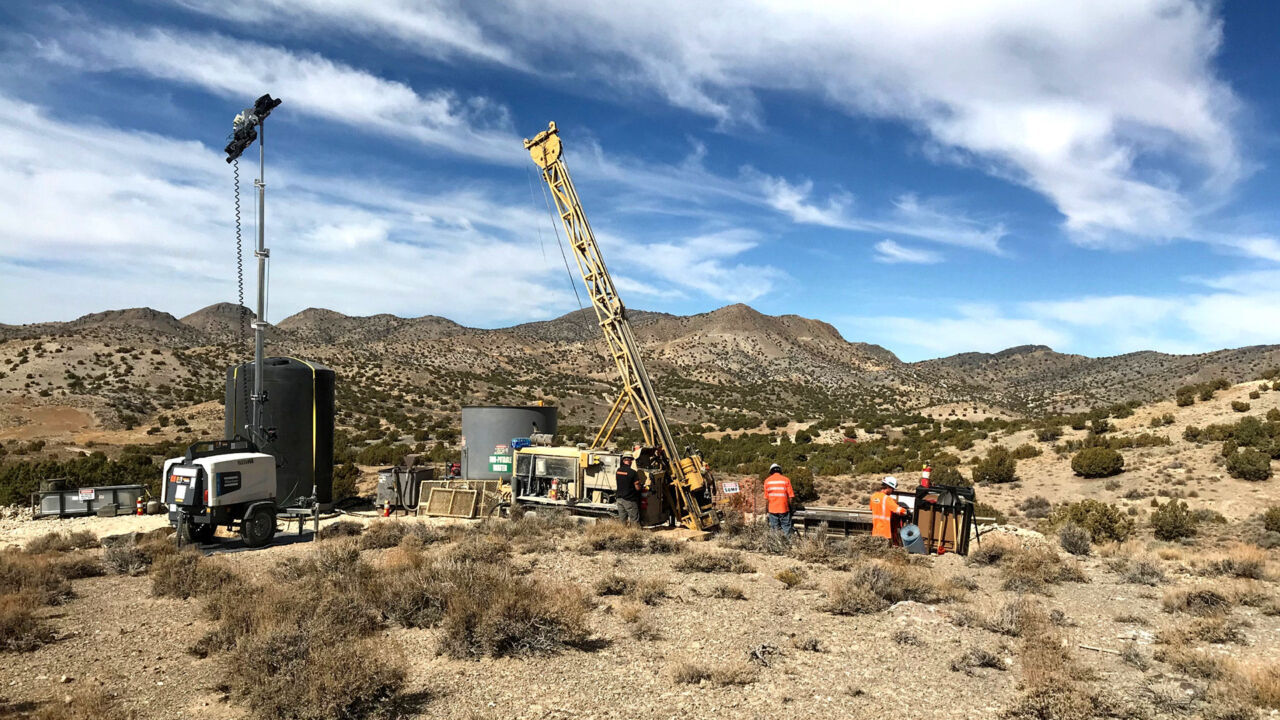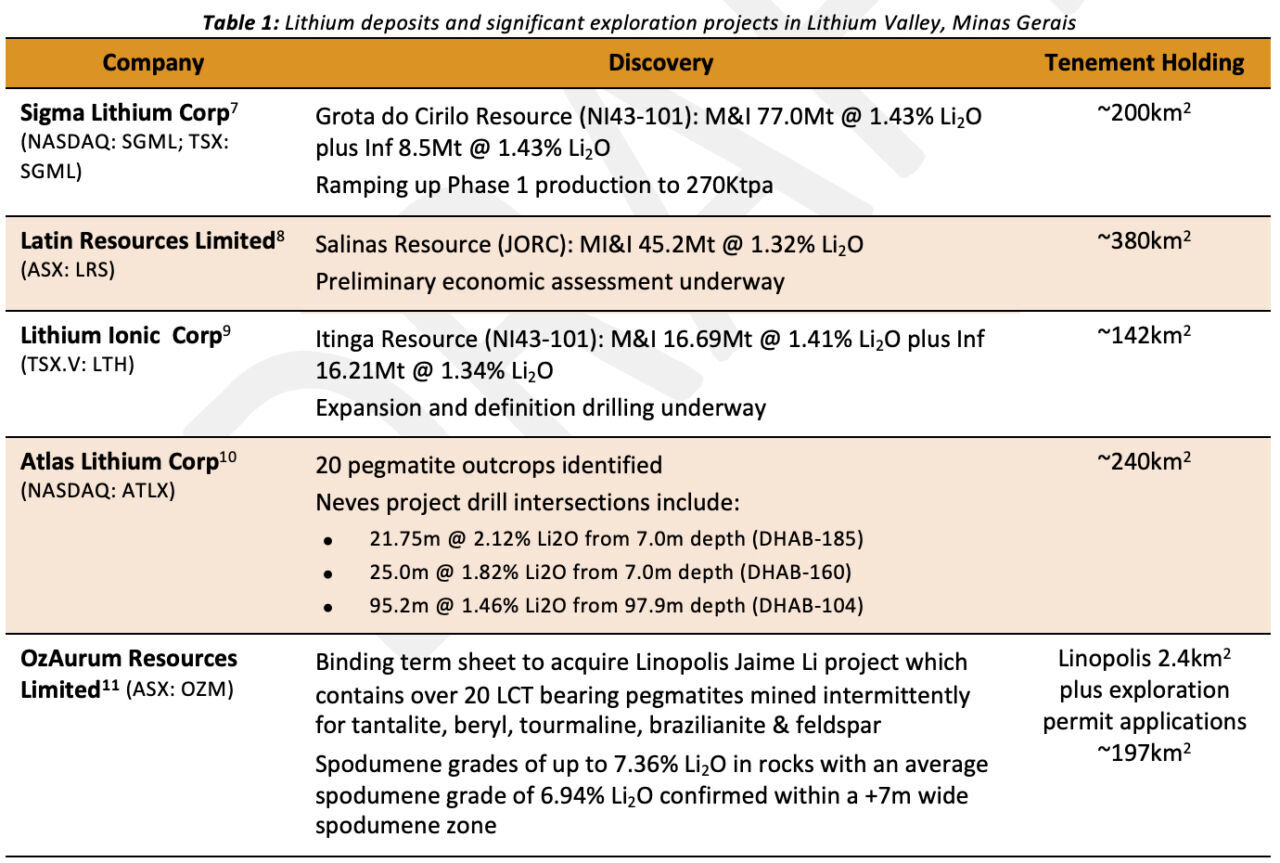Alderan has commencement the exploration of its Minas Gerais lithium projects in Brazil. Work has commenced on stream sediment and rock sampling over the Itambacuri project area where an outcropping pegmatite dyke with potential lithium indicator minerals was identified during the due diligence field visit in the second half of October 2023. If lithium-rich pegmatites are identified during the stream sediment sampling programme, it may be possible to fast-track drilling on these prospects.

The commencement of exploration activities follows shareholder approval for the acquisition of 100% of the issued capital in Parabolic Lithium which has the right to acquire a 100% interest in seven lithium exploration projects (together, the Projects) in the mineral resource-rich state of Minas Gerais, Brazil on 8 th November 2023.
“It is very exciting to get exploration underway on Alderan’s newly acquired lithium projects in the Lithium Valley district of Minas Gerais, Brazil. In less than three months the Company has gone from identifying the acquisition opportunity to completing the purchase and commencing exploration which is a great result. The stream sediment sampling is aimed at identifying lithium anomalies which will be followed up with soil and rock sampling plus geological mapping to narrow down the prospects for drilling. This phase of sampling is expected to extend into Q1, 2024 with the Carai, Catuji and Itaipe project areas to follow on from Itambacuri which in turn will be followed by Governador Valadares, Minas Novas and Curral de Dentro. Projects have been prioritised for sampling based on the occurrence of pegmatites and potential lithium indicator minerals identified during the due diligence field visit in October 2024. At Itambacuri, an eight-metre wide pegmatite dyke was identified with coarse feldspar and quartz plus tourmaline and red garnets.”
said the Managing Director of Alderan, Scott Caithness.
Exploration
The clay fraction stream sediment samples at Itambacuri will be collected at approximately 1km intervals along major drainages and at stream junctions to ensure that the entire project area is covered. They will be analysed at the ALS laboratory in Belo Horizontale, Minas Gerais for a suite of 48 elements which includes lithium and key lithium indicators.
The assay results will be reviewed with drainages containing anomalous lithium to be followed up with soil and rock chip sampling plus geological mapping. Drilling will follow the soil and rock sampling on priority targets.

Brazil Projects Background
The Projects consist of 24 granted exploration licences (472km) in seven project areas – Curral de Dentro, Minas Novas, Carai, Catuji, Itaipe, Itambacuri and Governador Valadares. The Projects are all located in and immediately to the south of the district known as ‘Lithium Valley’ in the Eastern Lithium Belt of Eastern Brazil.
Lithium deposits currently being mined in Minas Gerais include Companhia Brasileire De Litio’s (CBL) Mina da Cachoeira underground mine which has a stated production capacity of 42,000t per annum of 5.5% Li2O spodumene concentrate, AMG Brazil’s Mibra lithium-tantalum-niobium-tin mine which has capacity to produce 130,000t lithium concentrate per annum and Sigma Lithium Corporation’s recently commissioned Grota do Cirilo operation, which is ramping up 270,000t per annum of lithium concentrate.
Recent lithium discoveries in Lithium Valley include Sigma Lithium Corporation’s Grota do Cirilo project, Latin Resources Ltd’s Salinas Project and Lithium Ionic Corporation’s Itinga Project. Resources and exploration results are outlined in Table 1 below. Other companies actively exploring in the district include Atlas Lithium Corporation, which has the Neves project, and OzAurum Resources Ltd, which is exploring the Linopolis Jaime project.

Next Steps
Alderan plans to complete the stream sampling programme over all of its Brazil lithium project areas in the first quarter of 2024. Following receipt of assay results, the work programme will entail narrowing down to prospect areas for drilling. This will entail soil and rock sampling plus geological mapping over anomalous areas identified from the stream sediment sampling in Q2, 2024.

 Copyright 2020 All rights reserved.
Copyright 2020 All rights reserved.